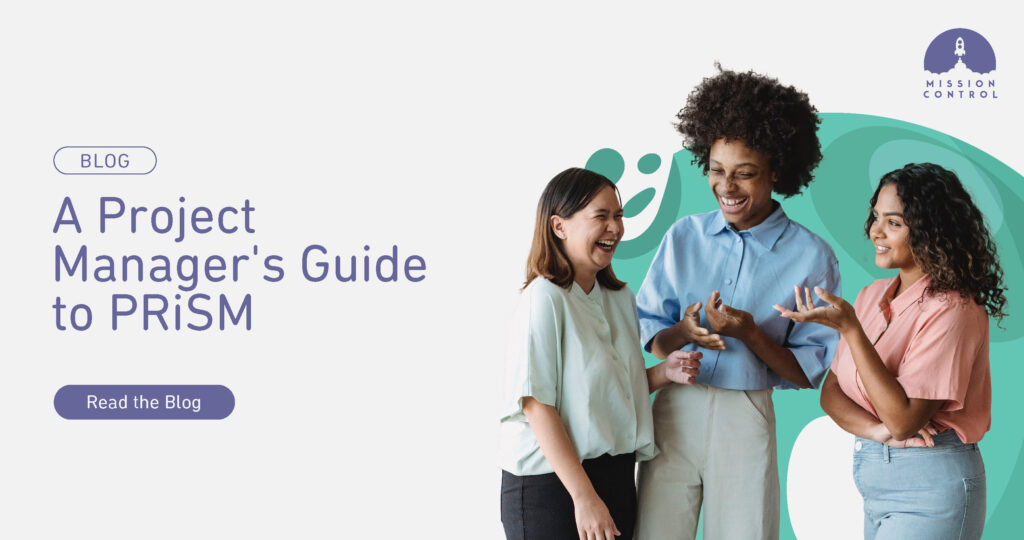Sustainability is catching on in project management as senior executives’ view of project success continues to evolve.
Modern organizations are moving beyond time, cost, and scope as the basis for project success. The focus has shifted to adopting a sustainability ethos where projects don’t come at the expense of the environment and its limited resources.
As a project manager in an organization with sustainability ingrained into its core philosophy and strategy, you need a reliable project management methodology to help you monitor and track the impact of all project activities.
This is where PRiSM comes in. The PRiSM methodology offers holistic sustainability tracking and management across projects. It’s a critical tool for companies that attach great importance to sustainable development.
What is PRiSM?
PRiSM stands for PRoject Integrating Sustainability Measures.
It’s a structured, process-based methodology that integrates sustainability into the project lifecycle. By implementing the PRiSM methodology and using the provided tools and methods, businesses can deliver successful projects that adhere to sustainability measures.
The PRiSM methodology was developed in 2013 by GPM (Green Project Management) and is based on its P5 Standards for Sustainability in Project Management. It aims to enable companies to integrate environmental sustainability into their project management processes and thus reduce their ecological and social impact when carrying out projects.
The Process of Integrating Sustainability into Project Management
As mentioned, the PRiSM framework is based on the P5 elements for sustainable development in project management. The 5Ps are:
People
Planet
Prosperity
Process
Products
These elements link sustainable development to projects. They enable organizations to understand their projects’ impact on society, the environment, and the economy. Organizations can then implement eco-friendly practices that contribute positively to the UN’s Sustainable Development Goals.
Principles of the PRiSM Methodology
It’s essential for organizations to understand the core PRiSM principles before implementing the methodology..
1. Commitment and accountability
This principle recognizes that everyone has a right to a safe, healthy, clean environment, equal opportunities, fair pay, ethical procurement, and legal compliance.
2. Ethics and decision-making
Organizations should identify, mitigate, and prevent short-term and long-term harmful deterrents to society and the environment by supporting organizational ethics and decision-making.
3. Transparency and integration
Promote the interdependence between social integrity, environmental impact, and economic development in all aspects of governance, practice, and reporting.
4. Principle and values-based development
Maintain and enhance natural resources by improving how you develop and use technologies and resources.
5. Social and Ecological Equity
Use demographic dynamics to evaluate and understand human vulnerability in ecologically sensitive areas and population centers.
6. Economic Prosperity
Establish fiscal goals and strategies that balance the needs of the stakeholders—present and future.
Advantages and Disadvantages of the PRiSM in Project Management
PRiSM is an excellent methodology for organizations that take corporate social responsibility seriously and want to reduce their negative environmental impact.
Other benefits of PRiSM in project management include:
- The reduced negative impact of projects on the environment: The most significant benefit of the PRiSM framework is that it leads to positive effects on the planet and the people working on your projects.
- Helps organizations meet sustainability objectives: PRiSM offers clear plans and breakdowns. This enables companies to realistically meet their sustainability objectives and align them with the organization’s overall strategy.
- Boosted company reputation: Enables companies to be more socially responsible. This helps push their reputation as ethical and eco-friendly organizations.
- Accountability and transparency: PRiSM breaks down all activities across the project and organization. In doing so, organizations can accurately report to their stakeholders and keep up with any necessary sustainability compliances.
As beneficial as PRiSM is, the methodology also has a few potential drawbacks to be aware of.
- Costly accreditation: To implement PRiSM, project managers must first be accredited, which can be expensive and time-consuming.
- Significant initiative: For PRiSM to work, it must be implemented across the entire company, which can be intimidating. All departments must collaborate, be transparent and support the methodology to bring out the best results.
- Sustainability must be a core organizational goal: PRiSM’s success depends heavily on the organization’s stand and commitment to sustainability. Without commitment to sustainability, people within the organization might not embrace this methodology.
Is PRiSM Methodology Right for You?
With the growing demand for ethical and eco-friendly organizational practices, any business that follows through will likely improve its relationship with employees, customers, suppliers, media, and governments they are associated with.
Implementing the PRiSM methodology enables project managers to contribute to organizational goals and create benefits that support short- and long-term business strategies while simultaneously addressing environmental constraints.
PRiSM may be the right fit for you if your organization is committed to implementing sustainable practices and accurately monitoring and reporting on your efforts. But, to make it work, adapt it to fit your organization’s goals and unique needs.
The PRiSM approach ensures that every project has clear sustainability objectives. Every project requires a robust Sustainability Management Plan (SMP) to reach these objectives. An SMP outlines how you’ll really meet those objectives. It also makes it easier for project managers to better track and monitor their sustainability activities and identify areas for improvement. Proper monitoring and reporting enable organizations to provide greater levels of accountability and transparency.
If you’re planning to adopt PRiSM principles at your organization, a project management tool can make the process more streamlined and easier to manage.
A tool like Mission Control enables you to manage all your projects from one place making it easier to run and track them from planning to delivery. Having one central hub gives you a bird’s eye view to your projects enabling you to ensure all your practices are sustainable throughout the project lifecyle.
Contact us today to see how Mission Control can help run sustainable projects.




